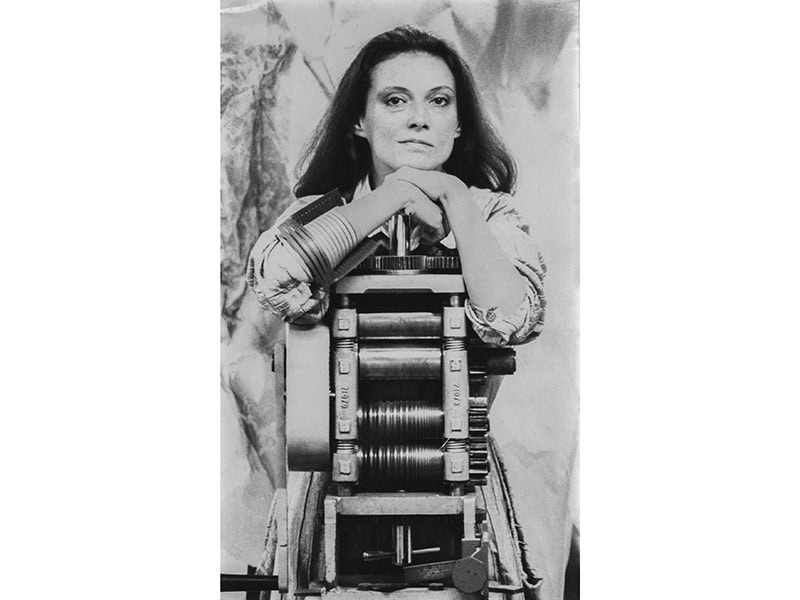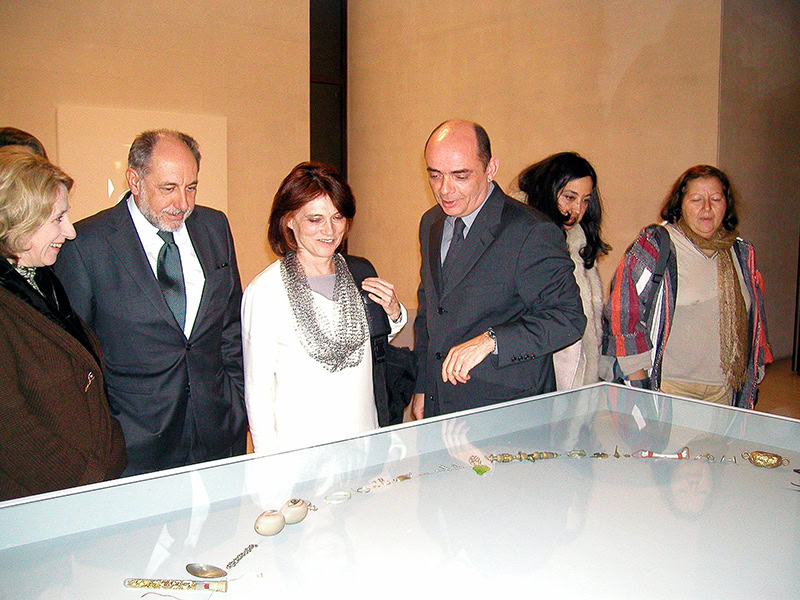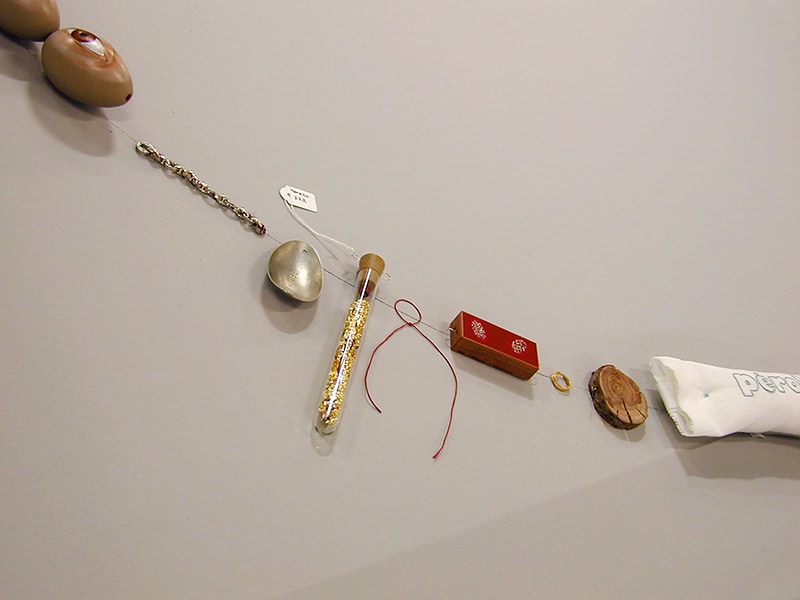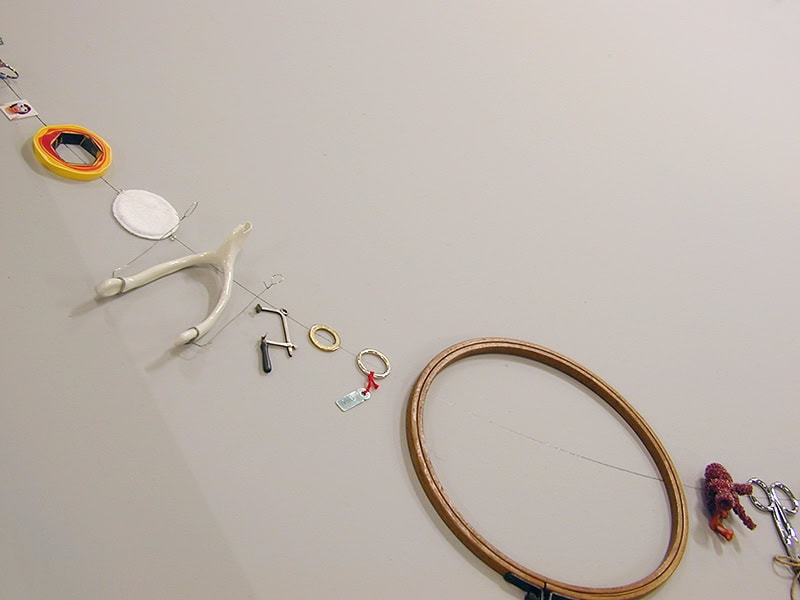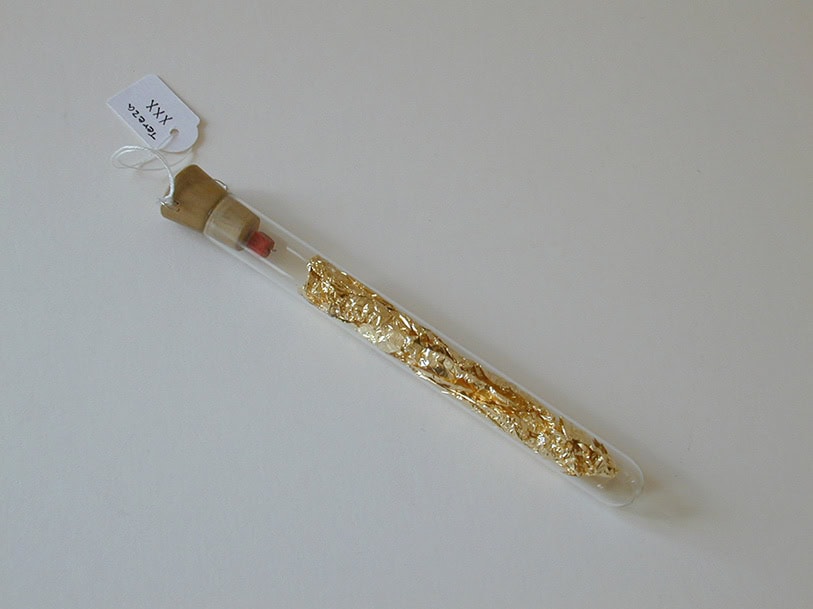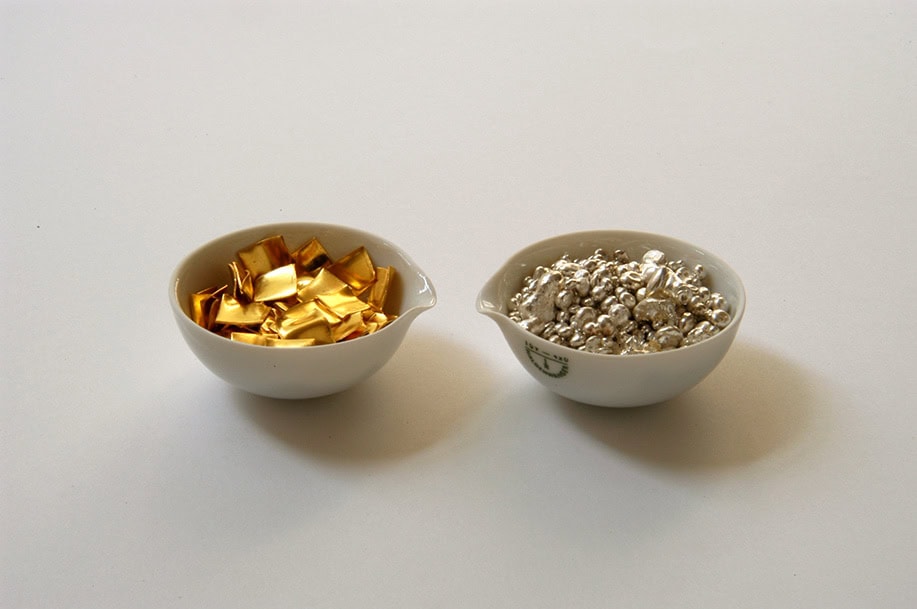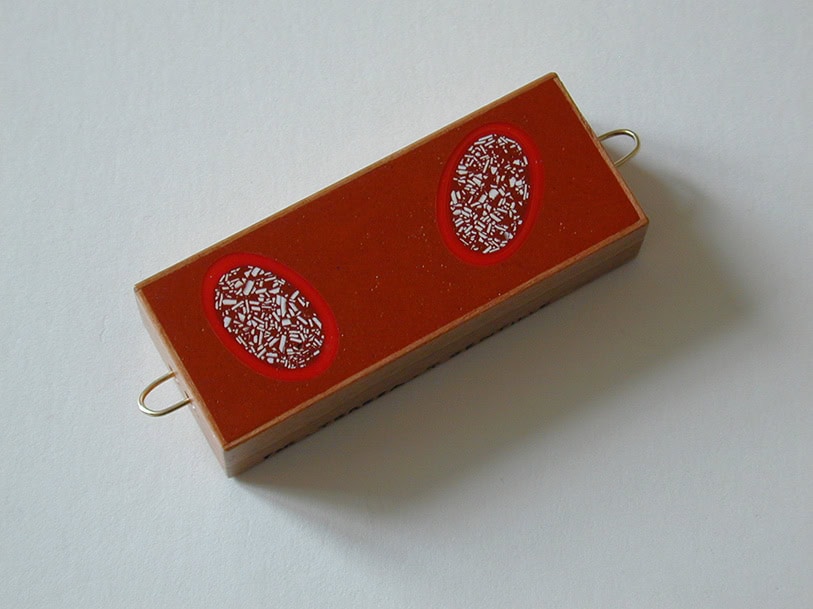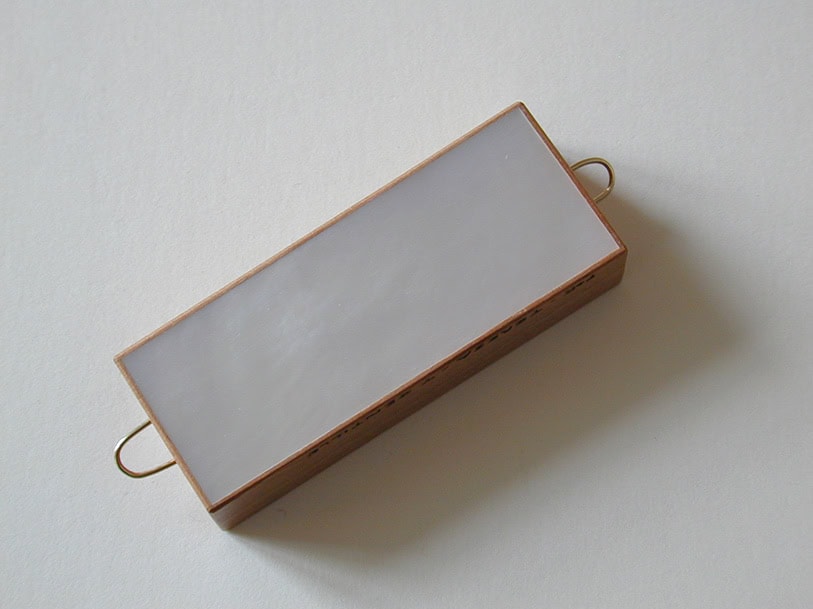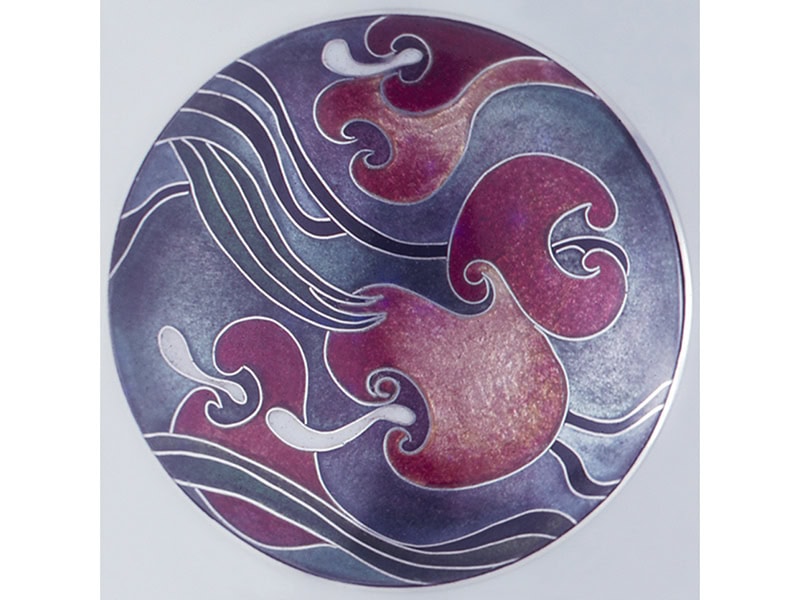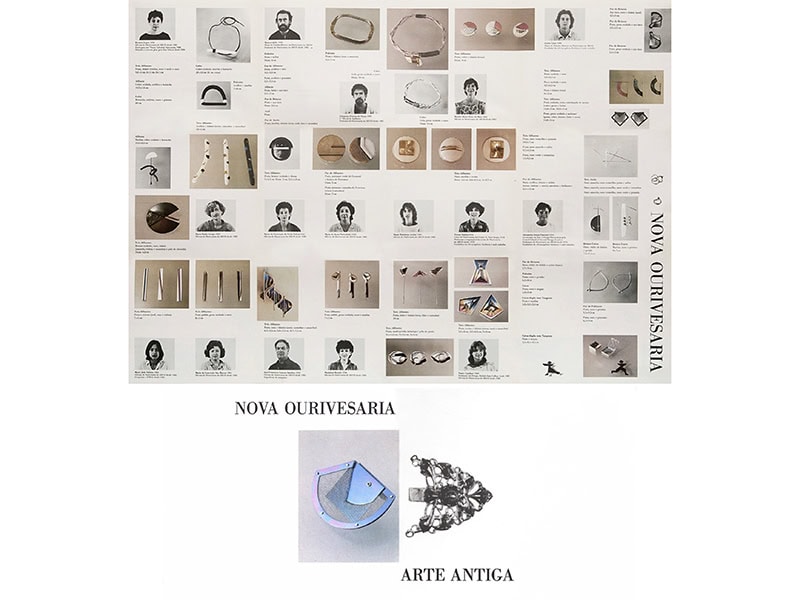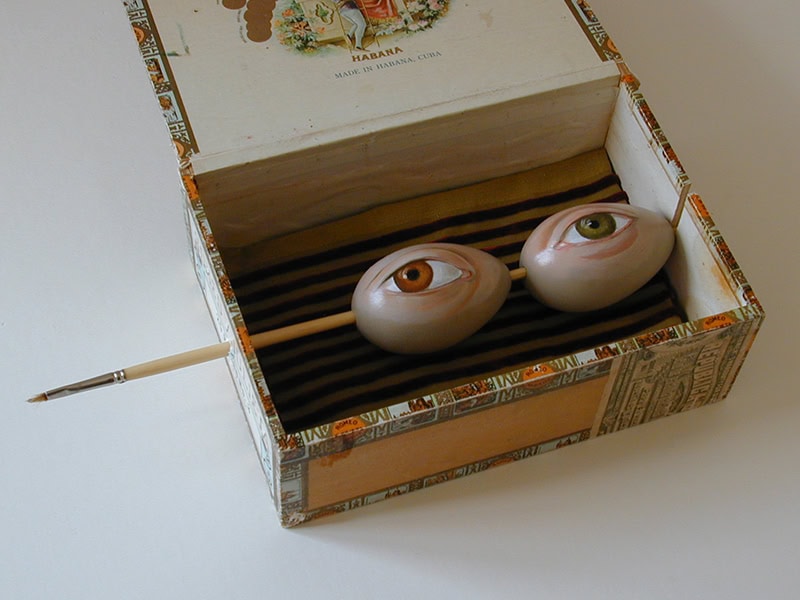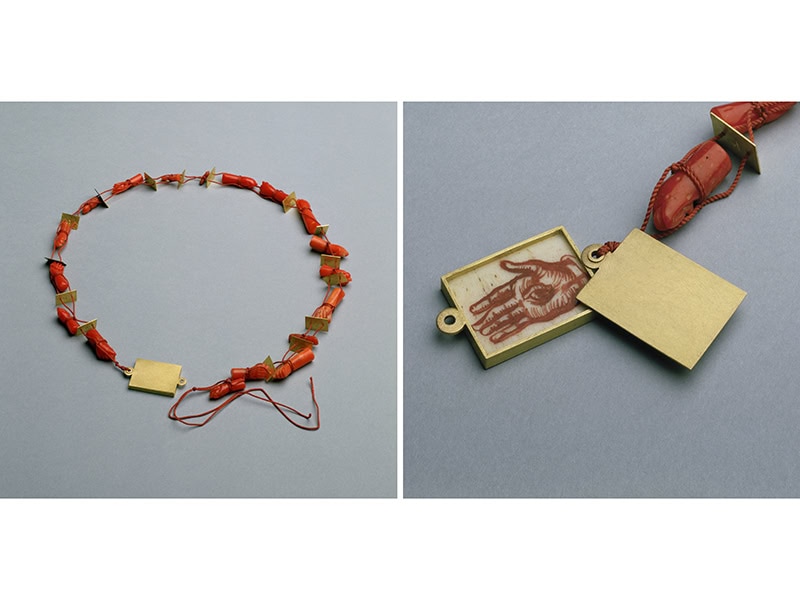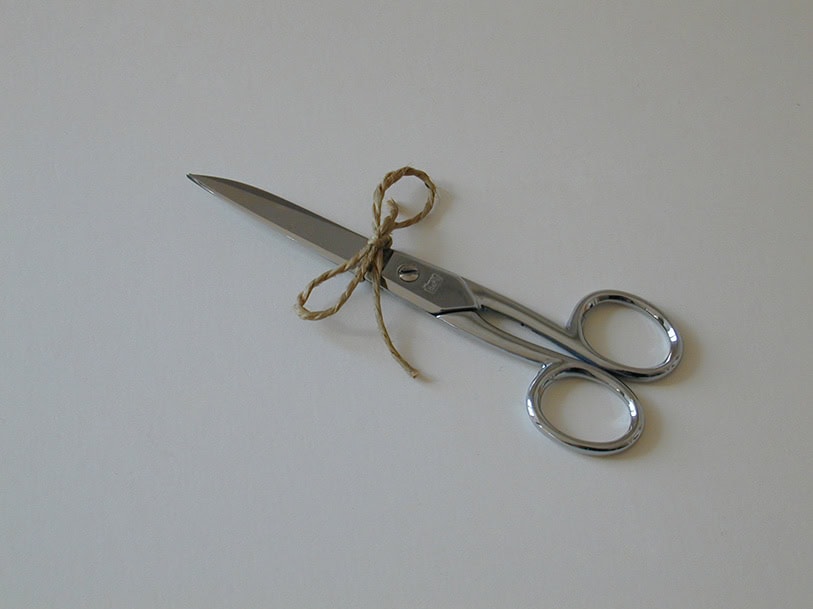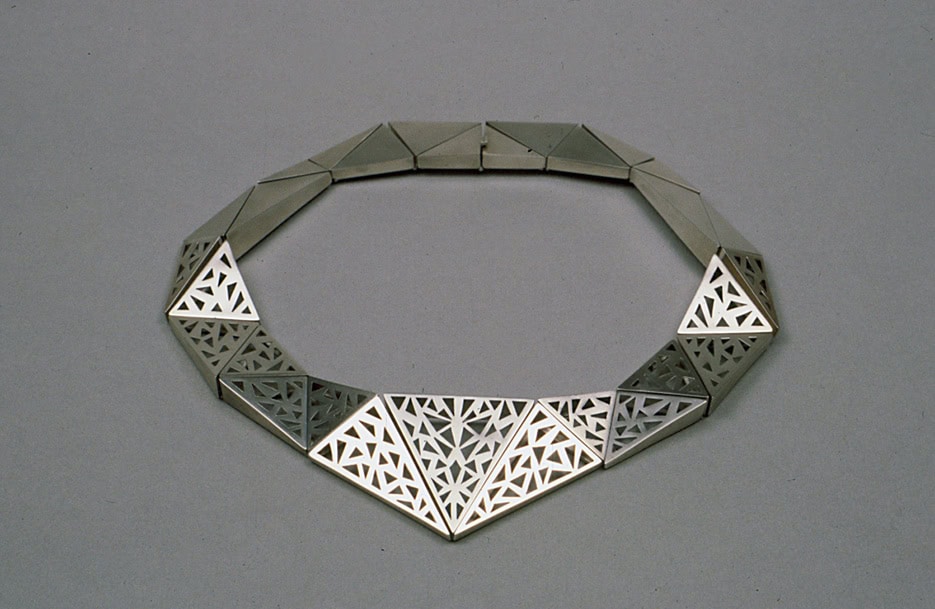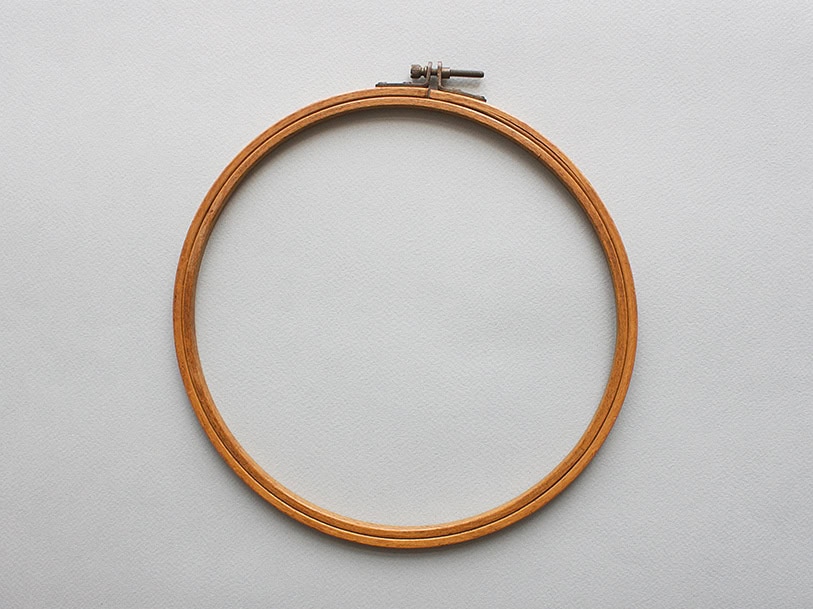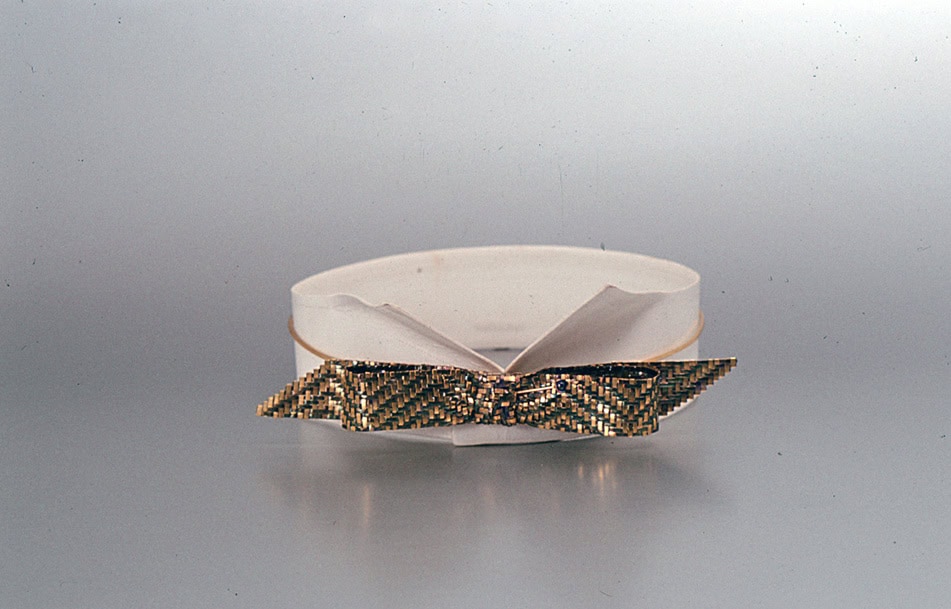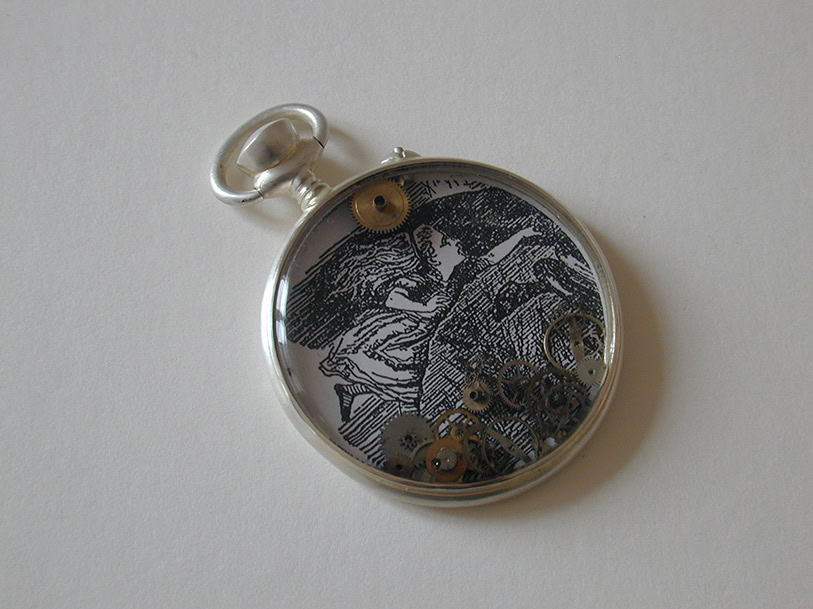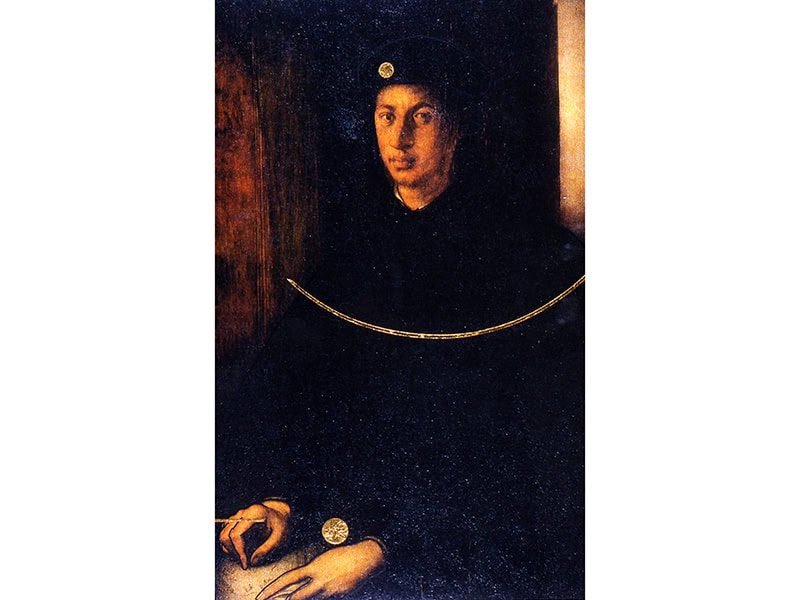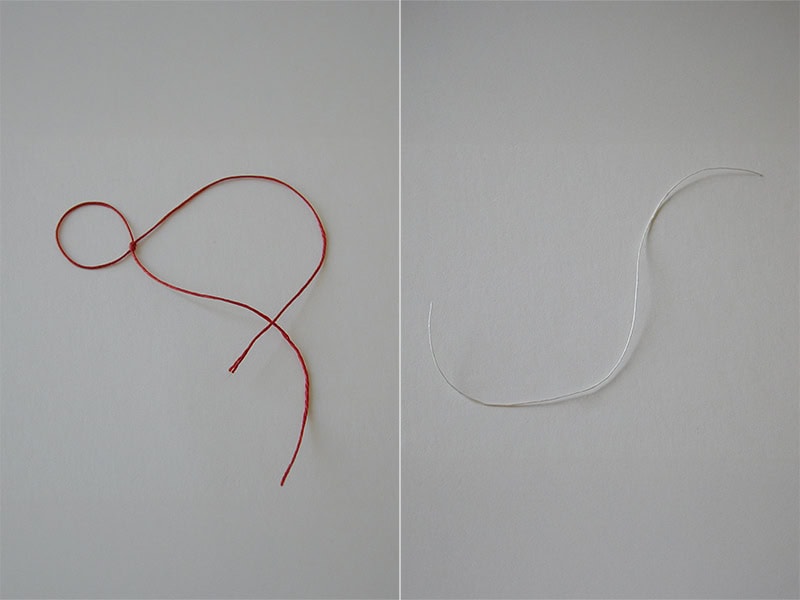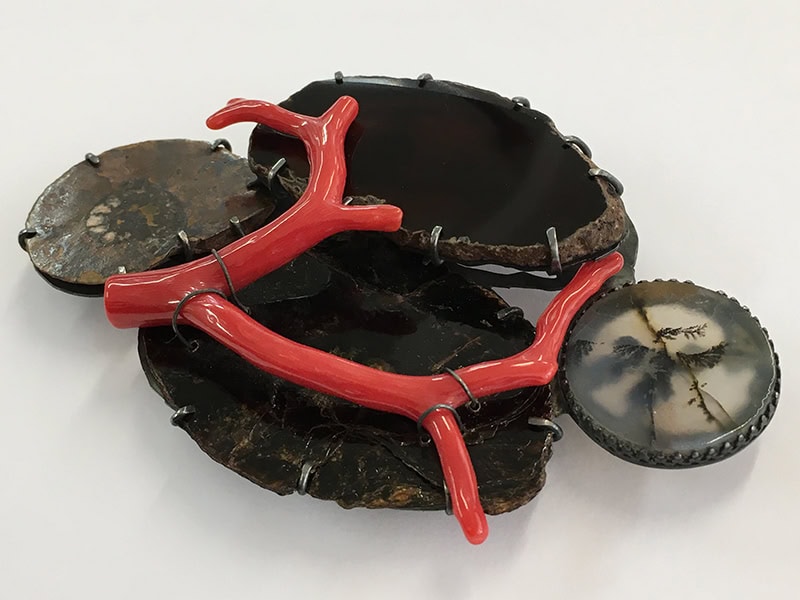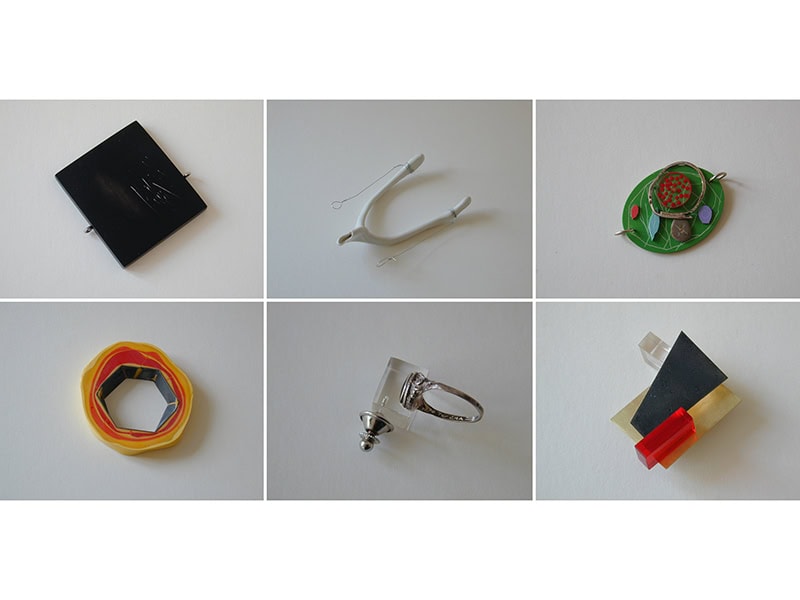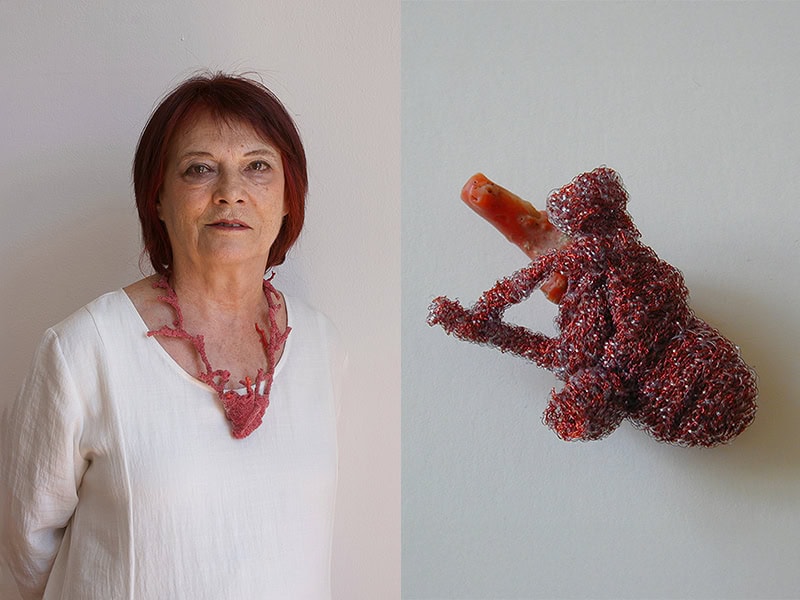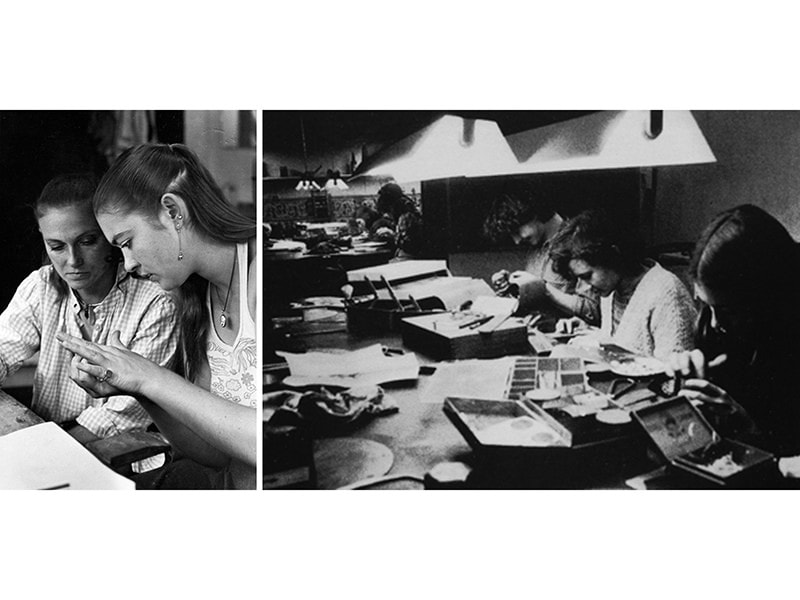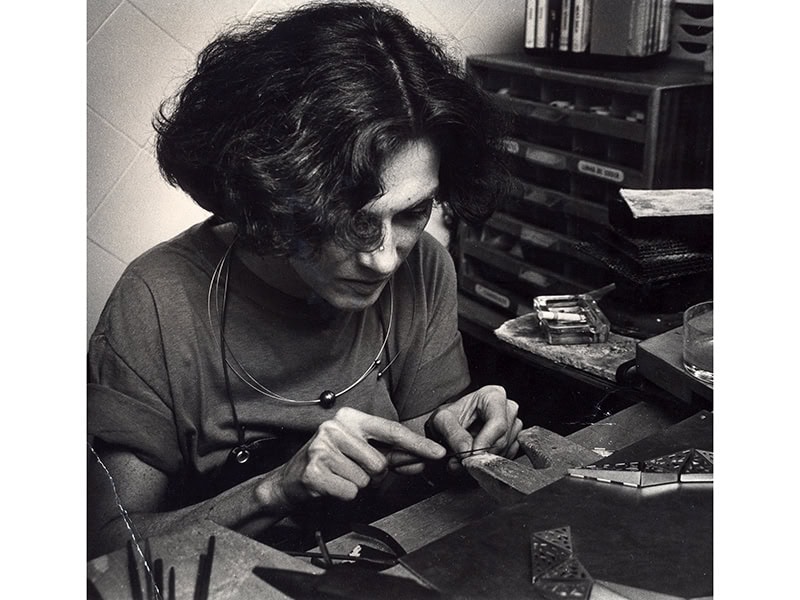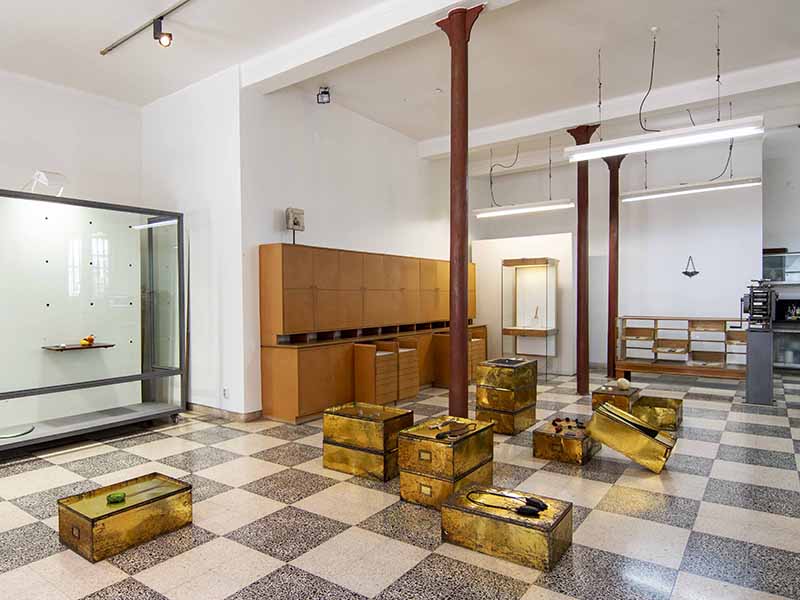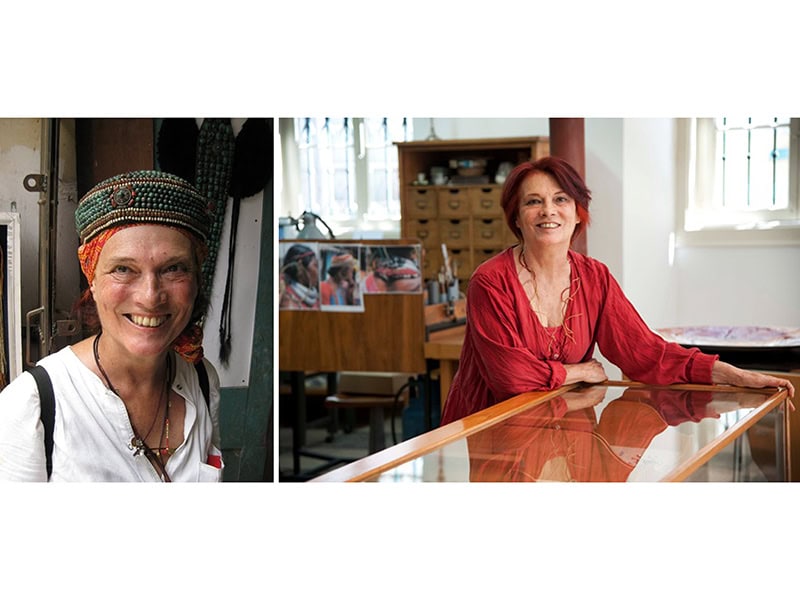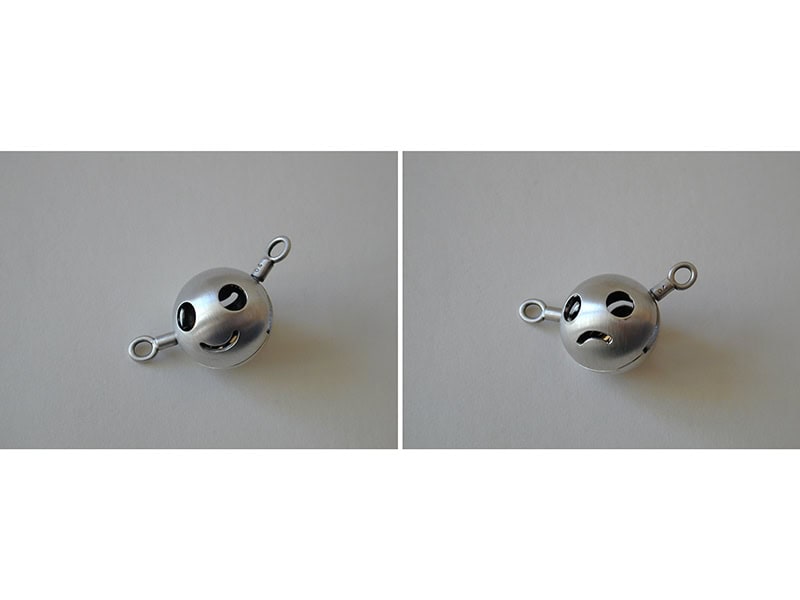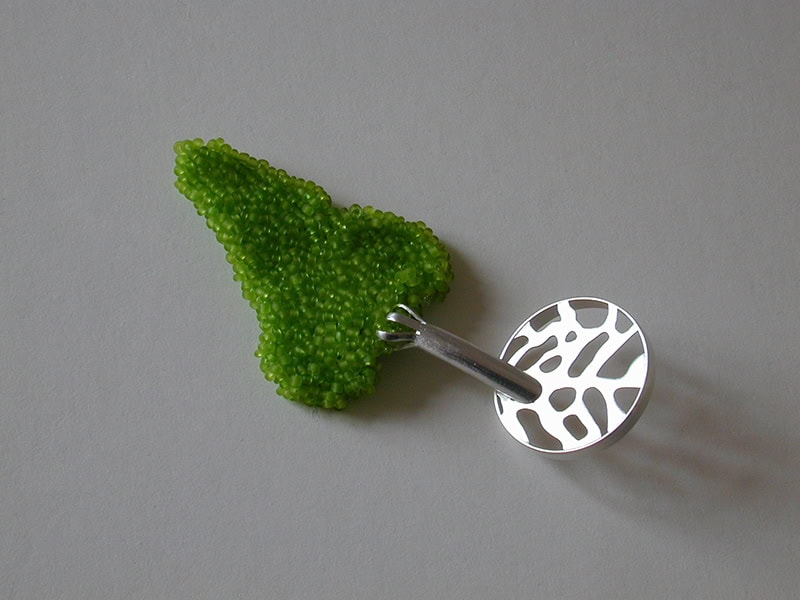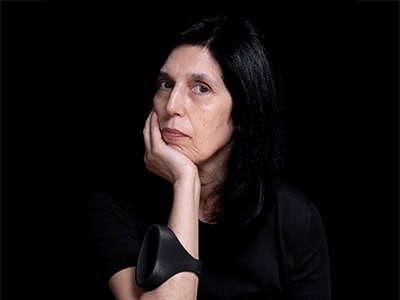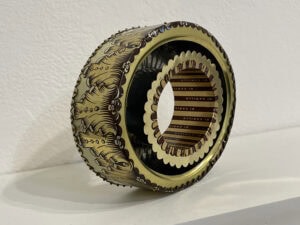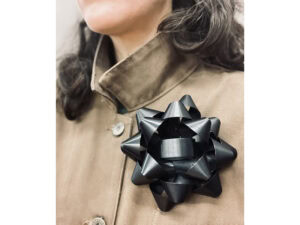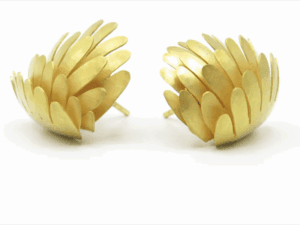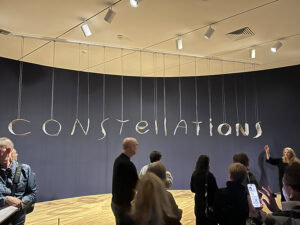Click on the photos to find their captions.
To mark Tereza Seabra’s 80th birthday, this article looks back on her extraordinary career and path in life via a project I initiated in 2004 called A Chain for Tereza. This piece, created for Seabra, celebrated her 25th anniversary as head of Ar.Co – Centro de Arte e Comunicação Visual’s jewelry department.[1]
I am a former student of Seabra’s, and, ever since, have always felt free from any imposition or restriction. She accepted my proposal to teach at Ar.Co, and trust and liberty was the rule. I held my first solo exhibition at Galeria Artefacto 3, her first gallery, and she shared her extraordinary archive for me to study.
A Chain for Tereza is a large “necklace,” 63 inches (160 cm) in diameter, made thanks to the generosity of 66 guests (disciples, masters, and colleagues) who, at my invitation, contributed a “link” that expressed their vision or relationship with Seabra. This article describes the themes and approaches of some of those contributors as they relate to Seabra’s career. The cross-disciplinary approach and breaking of norms expressed in the Chain, so representative of contemporary jewelry, result from her legacy.
Alchemy
For his “link,” Luís Torres (PT, 1978), one of her former students, placed gold leaf in a test tube and called it Alchemy—The Origin of Magic. As a teacher, Seabra always instilled a great respect for material and has always been interested in its transformation along with what the process symbolizes. This item expresses her interest in alchemy and the inherent power of jewelry since the first works she created at the Art Institute of America/Craft Institute of America and at 92nd Street Y (now 92Y), in New York, from 1968 till now. A good example of this is her piece V.I.T.R.I.O.L. Visita Interiora Terrae; Rectificando Invenies Occultum Lapidem (Visit the Interior of the Earth; through Purification You Will Find the Hidden Stone), a key work from 2005.
Precision
Thomas Gentille (US, 1936), Seabra’s first jewelry teacher, contributed to A Chain for Tereza with a meticulously precise prism like a domino. Seabra had always admired the preciseness of his work during the great changes of the 1960s, when she arrived in New York and decided to continue her art studies, now in the field of jewelry.
Seabra originally studied painting at the Escola Superior de Belas-Artes, in Lisbon (1962–1964). Her marriage to a Portuguese diplomat led her to live abroad in places that became important to her artistic career. They lived in Windhoek (1966–1968), the capital of Namibia. This location increased her interest in the anthropological characteristics of jewelry, as can be seen in the work Seabra developed as Gentille’s student during the following years in New York (1968–1975). The period they lived in Hamburg (1975–1977) deepened her theorical research as a post-graduate student under Almir Mavignier (1925–2018) at the Hochschule für Bildende Künste. In Hamburg, she put on her first solo show at Galerie Silbermine, where she worked. She then returned to Lisbon in 1977.
Gentille’s “link” is significant in this necklace because, thanks to Seabra, he was a key player in the way contemporary jewelry was taught in Portugal.[2] He mentored two workshops at Ar.Co, in 1983 and 1987, and held a solo exhibition at the Calouste Gulbenkian Foundation, which had never before shown contemporary jewelry, in 1983. Immediately afterward, in 1985, Seabra curated Nova Ourivesaria (New Goldsmithing), the first major group exhibition of works by Ar.Co students and teachers at the Museu Nacional de Arte Antiga. The show contained many works resulting from Gentille’s workshop.
Attentiveness
António Marques (PT, 1959) contributed a “link” with painted eyes from the series The Tree of the Five Senses. They symbolized both the sense of vision and the careful attention that Seabra gives to every detail and story behind each artefact, as well as their magic qualities.Many of her works include eyes, from “the eyes of Gods” in the Pompeia necklace (2005), created together with Marques, to the more recent Hamsás, which dates back to her visits to India. Her jewelry has always possessed amuletic attributes. The importance of this capacity to look and of profound attention also applies to her other activities.
Research
Thierry Simões (FR, 1968), an artist and mentor of several experimental workshops for jewelry students at Ar.Co, chose a pair of scissors for the A Chain for Tereza. Fearlessly, Seabra always opens up new paths. The bow, bringing the ends together like on a gift, emphasizes the underlying ceremony of each gesture. Her creations never come as an isolated work but in series that allow her to investigate each theme even more profoundly.
Tools
Manuel Castro Caldas (PT, 1954), the director of Ar.Co (since 1994), contributed a large wooden embroidery hoop, reinforcing the purpose of the scissors, as both of these readymades stress the precision in Seabra’s work.
Her workbench is like a museum. She has collected tools and taken care of them from the very start, and instead of seeking what’s modern or sophisticated she keeps the old and worn, imbued with the stories each has preserved after years of use. An embroidery hoop is shaped much like a “link,” and it delineates a working area. This one highlights the focus of each gesture and the important role that fabrics have played in Seabra’s work since the 1980s, when she first worked on a series of bows woven with great precision in gold and silver.
Time
Susana Beirão (PT, 1978), another of Seabra’s former students and a favorite assistant at her gallery, created a pocket watch with a drawing from the book Alice in Wonderland on its face instead of fixed hands, symbolizing timelessness and, at the same time, the speed of time. É Tarde! (It’s Late!) is its title. Seabra runs and fights against time, wandering through diverse epochs, cultures, and times: from the Italian Renaissance to “deep” India. She revisits these times and places, giving them form and bringing them to the present. Thanks to Seabra’s jewelry, we can access the histories, stories, cultures, and lives of different civilizations.
Relationships
The artists Armanda Duarte (PT, 1961) and Elizabeth Callinicos (UK, 1966) respectively contributed two loose threads, an “interval”, to be filled in, and a “node,” in a form of a ring, symbolizing the power of connections. Seabra has built a legacy through her choices of collaborators, her masters, and her disciples. So many imaginary threads begin with Seabra and connect her with numerous entities, whether natural or ancestral. Nothing more symbolic could represent this open field where she weaves her world.
Identity
Examples of international artists who collaborated closely with Seabra, through the jewelry course and her two galleries, include Rámon Puig Cuyàs (SP, 1953), Ted Noten (NL, 1956), Paolo Marcolongo (IT, 1956), Ruudt Peters (NL, 1950), Christoph Zellweger (CH, 1962), and Kadri Mälk (EE, 1958–2023). They all established strong links with the jewelry course, as well as with some of their teachers and colleagues.
Cuyàs, for instance, taught Marília Maria Mira (PT, 1963) at the end of the 1980s at the Escola Massana (Barcelona, Spain), where she studied after Ar.Co. Mira went on to have a significant influence on the teaching of contemporary jewelry in Portugal. Marcolongo was the first Italian artist to exhibit at Artefacto 3, with the minimalist Intersegni exhibition, in 1991. Noten visited Ar.Co for the first time in 1989 to present his work as a graduate student from Gerrit Rietveld Academie. He was my colleague at that time, and later, in 2000, created the iconic Chain of Lisbon project with Ar.Co students. Peters ran an extraordinary workshop, organized by Seabra and inspired by Peter Greenaway’s film The Cook, the Thief, His Wife & Her Lover, and presented Passion at Artefacto 3 in 1994. Zellweger has visited and worked in Lisbon many times since 1998, both as a guest artist and a professor. He always pushes the boundaries and creates tensions, as his Wishbone “link” shows. Our dear Mälk led the Fata Morgana project at Ar.Co in 2004, and Seabra purchased the iconic Cold Sweat neckpiece for her collection in 2021. All of these artists have shared the modus operandi and identity of their work, which characterizes them so greatly, as can be seen in these tribute “links” in the A Chain for Tereza.
Collecting
Diana Silva’s (PT, 1976) iconic knitted From My Heart “link” refers to Veins, the necklace made during her artistic residency in Florence. Seabra acquired it for her collection in 2002. Seabra’s collection includes many pieces created by her former students. This is both a way of supporting and encouraging them, and of preserving and documenting the history of their legacy.
A Chain of Connections
Seabra has always been focused on establishing contemporary jewelry in Portugal, both as an educator and a gallerist. In 1978, she set up the jewelry department at Ar.Co[3]—the very revolutionary, cutting-edge school that the artists Manuel Costa Cabral and Graça Costa Cabral started in Portugal in 1973. She opened the first gallery in Lisbon devoted to contemporary jewelry, Artefacto 3, in 1984,[4] and, later, Galeria Tereza Seabra, in 1998.
Between the 1960s and the 1990s, Seabra had three solo exhibitions. Her Jewels for Alessandro de’ Medici (1996) finally led to the publication of the first catalog of her work. However, equally deserving of a catalog and a touring exhibition were works presented at Galerie Silbermine, Hamburg (1975), and Museu Nacional do Traje, Lisbon (1985), which had shown her works since the 1960s. She deserves more solo exhibitions, especially abroad.
This century, her artistic output has continued along with her gallery and investigative work into the ancient customs and traditions that can still be found in the unique jewelry produced in the Indian states of Chhattisgarh and Odisha.[5] This is one of the reasons I dedicated the first volume of Collection J (2024) to her art work in dialogue with this research into rural and tribal jewelry in India. I had previously written about her as an artist, teacher, and gallerist between 1963 and 2004 in a section of my book Contemporary Jewellery in Portugal: From the Avant-Garde of the 1960s to the Early 21st Century (2019). Unfortunately, many of the important pieces she made in the past cannot be located, or are not well documented, partly due to a lack of exhibitions and publications. Nonetheless, a retrospective exhibition of her work and a catalog are vital. Seabra continues researching and creating while her jewelry collection[6]—which includes pieces by 70 international and 57 Portuguese artists, from the 1960s until today—continues to grow significantly, with a total of 315 jewels. She is currently in the process of generously donating it to MUDE – Museu do Design, in Lisbon, which will house this collection. To celebrate this gesture and important event, the museum will organize an exhibition and a catalog, thus consolidating and perpetuating Seabra’s legacy and its unquestionable importance in the history of contemporary jewelry.
This article ends with photos of two “links” as if to close this large necklace. One “link,” shown above, is by Luís Moreira and called Tereza Seabra (PT, 1964). When asked about its meaning, he said that it’s a symbolic representation of Seabra as his teacher. He also highlighted the hidden presence of a gold heart inside his two-sided emoji. And the “link” below, by Leonor Hipólito (PT, 1975), provides a figurative representation of a tree with roots that metaphorically translates the genealogy of this impressive chain of connections.
Para ler este artigo em português, clique aqui.
References
Filipe, Cristina, “O Ensino da Joalharia em Portugal: O Ar.Co, de 1978 à Actualidade. O que é (Afinal) uma Jóia?” in Sousa, Gonçalo de Vasconcelos, Actas do II Colóquio Português de Ourivesaria. Porto: UCP, CIONP, CITAR, 2012, pp. 113-123.
—, Contemporary Jewellery in Portugal: From the Avant-Garde of the 1960s to the Early 21st Century. Lisbon: Author, MUDE, Museu do Design, Stuttgart: arnoldsche Art Publishers, 2019.
—, Collection J 01 – Tereza Seabra. Lisbon: Imprensa Nacional Casa da Moeda, 2024.
Seabra, Tereza, Interview conducted by Cristina Filipe in Cristina Filipe, Trajetórias da Joalharia Contemporânea em Portugal: Artistas e Contextos (1963-2004). Doctoral thesis in Heritage Studies. Universidade Católica Portuguesa, 2018, vol. II, pp. 933-976.
—, Pesquisa de Joalharia Tribal e Rural nos Estados Indianos de Chhattisgarh e Orissa, Report, 2012.
—, email, July 1, 2025.
“A Chain for Tereza,” in Ar.Co – A to Z https://www.arcoabecedario.pt/entries/124?locale=en (accessed June 27, 2025).
Translation
Carole Garton
Acknowledgments
Thank you to Tereza Seabra, Isabel Santos (Ar.Co), Catarina Silva (Galeria Tereza Seabra), Eduardo Sousa Ribeiro, Carole Garton, Nathalie Mornu (AJF), and to the artists and participants.
End Notes
[1] It was presented to her at the Meeting Point(s) 1978–2003. 25 Years of Interventions in the Jewelry Department of Ar.Co exhibition, held at CAM – Centro de Arte Moderna (Modern Art Center), established by the Calouste Gulbenkian Foundation.
[2] After Seabra created the jewelry department at Ar.Co.
[3] With Alexandra de Serpa Pimentel (PT, 1953).
[4] First with Alexandra de Serpa Pimentel and Pedro Cruz (PT, 1960). In 1986, Cruz left and Paula Crespo (PT, 1947) joined.
[5] Since 2012, Seabra has spent long periods researching in these two Indian states. In her first written report, she wrote, “From my work and reflections on these themes, I have gained an enormous amount of human and artistic richness. I also have the near certainty that this universe, which is already undergoing profound transformation brought about by inevitable progress, will soon become a memory for those who can and know how to remember it. Perhaps one of the main aims of my research is just that—to contribute to future memory.” In Tereza Seabra, Pesquisa de Joalharia Tribal e Rural nos Estados Indianos de Chhattisgarh e Orissa, Report, 2012.
[6] “Since the late 1960s, in a bustling New York, my collection began with pieces given to me by Thomas Gentille. Since then, it has grown to the present day. I’ve always loved having and wearing jewelry and the fact that I was in New York at the time, surrounded by an artistic and ultra-innovative atmosphere and energy, where everything was happening, helped me to focus on this area.” Seabra in email correspondence with the author, July 1, 2025.
We welcome your comments on our publishing, and we will publish letters that engage with our articles in a thoughtful and polite manner. Please submit letters to the editor electronically; do so here. The page on which we publish Letters to the Editor is here.
© 2025 Art Jewelry Forum. All rights reserved. Content may not be reproduced in whole or in part without permission. For reprint permission, contact info (at) artjewelryforum (dot) org
